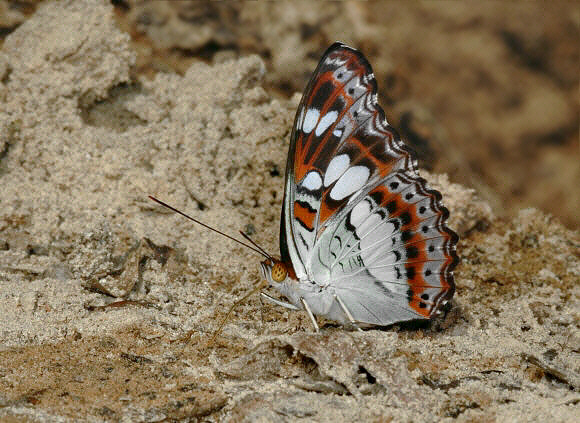
Moduza procris, Singapore – Gan Cheong Weei
Introduction
There are 9 species in the genus Moduza, all found in the Oriental region. They are closely related to the genera Limenitis and Athyma. Moduza procris is the commonest and most widespread species in the genus, being found in India, Sri Lanka, Nepal, Myanmar, Thailand, the Philippines, West Malaysia, Sumatra, Sarawak, Brunei, Sabah, Kalimantan, and Java.
Habitats
This species is found in heavily forested areas which receive high levels of rainfall, at elevations between sea level and about 400 metres.
Lifecycle
The larval food plants are various members of the Rubiaceae including Uncaria, Mussaenda, Wendlandia, Nauclea, Sarcolephalus, Stephegyne, and Timonias. The larva rests near the tip of a leaf, on the midrib, behind a barrier it has constructed from a chain of its droppings. Studies have demonstrated that these “frass chains” are an effective deterrent to ants, which appear to be dissuaded from crossing by toxins in the droppings.
Adult
Commanders have a swift and skittish flight with rapid wing beats alternating with spurts of smooth gliding. They are powerful on the wing, but usually only fly for short distances at a time.
Both sexes will visit herbaceous flowers, bushes, and flowering trees for nectar. Males often bask on river beaches and boulders. They are strongly attracted to urine-soaked ground where they may spend an entire day, with bouts of feeding broken by periods of resting or basking.
 Moduza procris, Taman Negara, West Malaysia
Moduza procris, Taman Negara, West Malaysia
